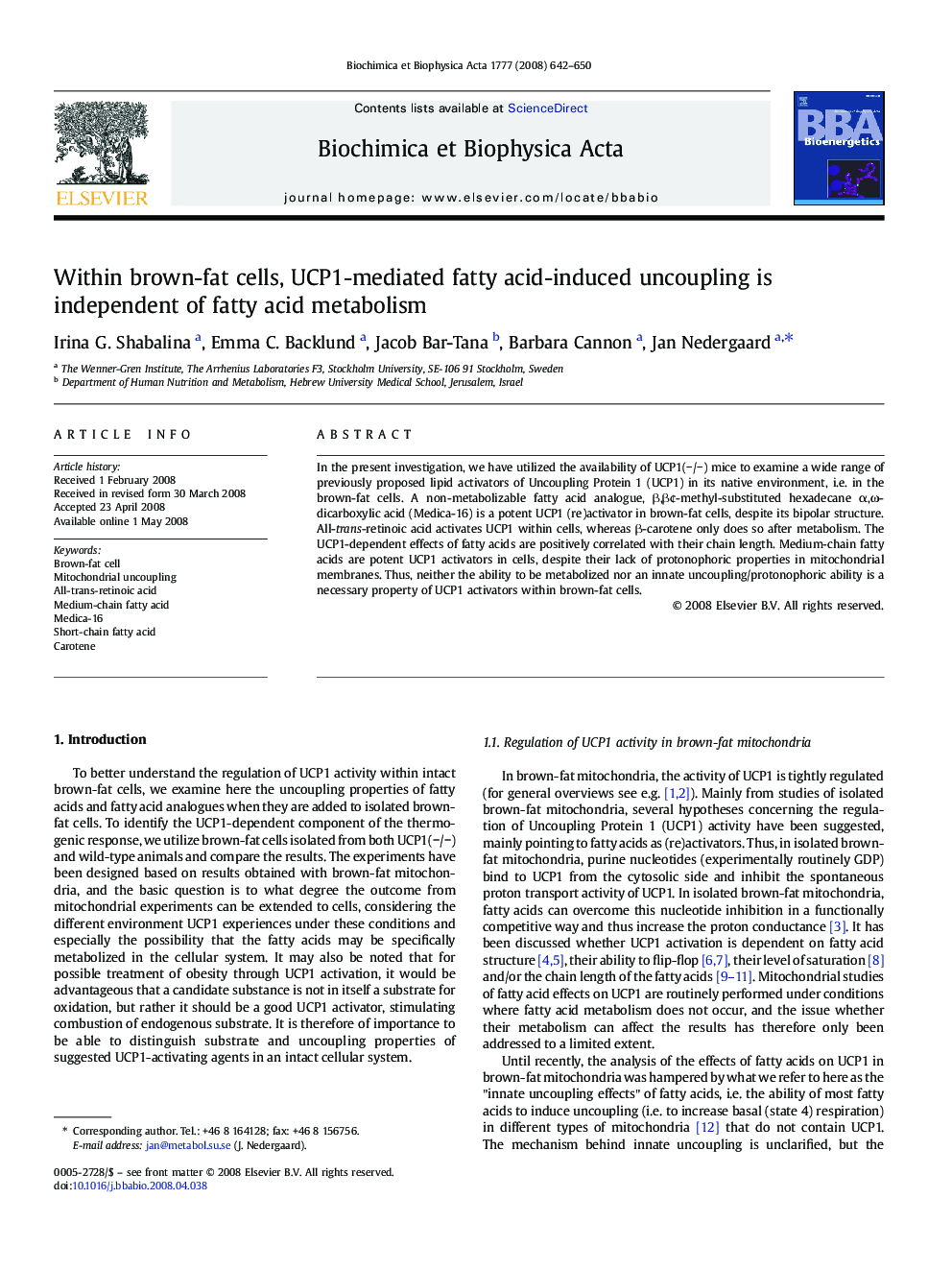| Article ID | Journal | Published Year | Pages | File Type |
|---|---|---|---|---|
| 8299108 | Biochimica et Biophysica Acta (BBA) - Bioenergetics | 2008 | 9 Pages |
Abstract
In the present investigation, we have utilized the availability of UCP1(â/â) mice to examine a wide range of previously proposed lipid activators of Uncoupling Protein 1 (UCP1) in its native environment, i.e. in the brown-fat cells. A non-metabolizable fatty acid analogue, β,β¢-methyl-substituted hexadecane α,Ï-dicarboxylic acid (Medica-16) is a potent UCP1 (re)activator in brown-fat cells, despite its bipolar structure. All-trans-retinoic acid activates UCP1 within cells, whereas β-carotene only does so after metabolism. The UCP1-dependent effects of fatty acids are positively correlated with their chain length. Medium-chain fatty acids are potent UCP1 activators in cells, despite their lack of protonophoric properties in mitochondrial membranes. Thus, neither the ability to be metabolized nor an innate uncoupling/protonophoric ability is a necessary property of UCP1 activators within brown-fat cells.
Keywords
Related Topics
Life Sciences
Agricultural and Biological Sciences
Plant Science
Authors
Irina G. Shabalina, Emma C. Backlund, Jacob Bar-Tana, Barbara Cannon, Jan Nedergaard,
